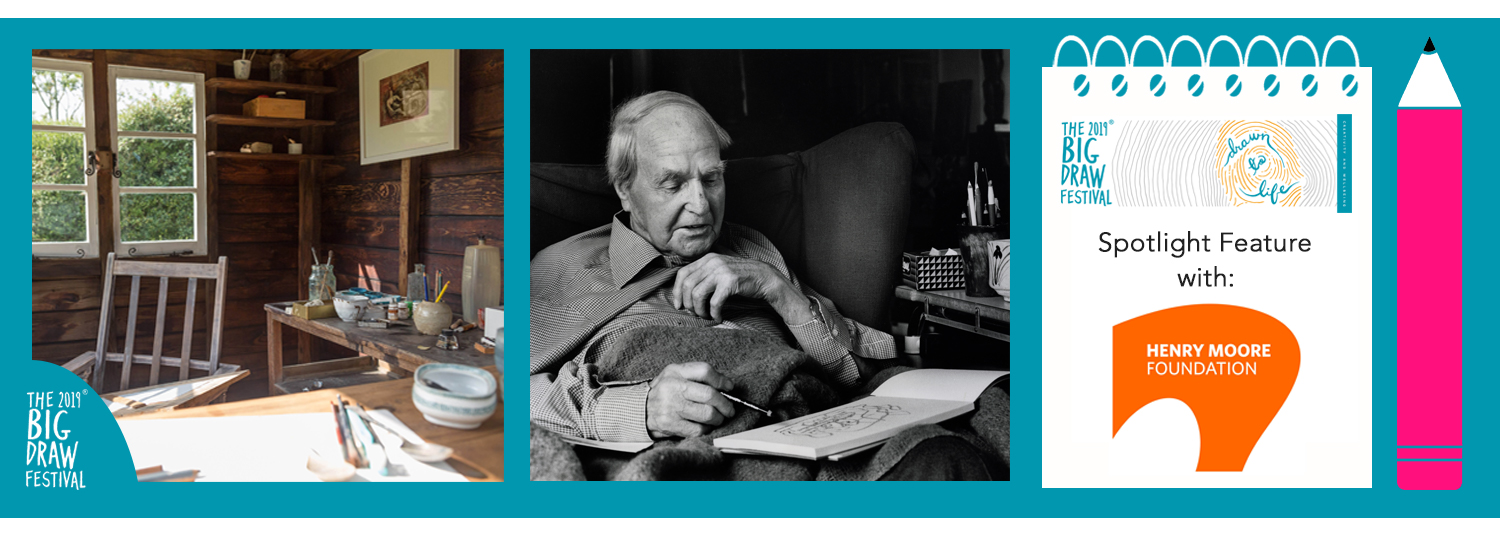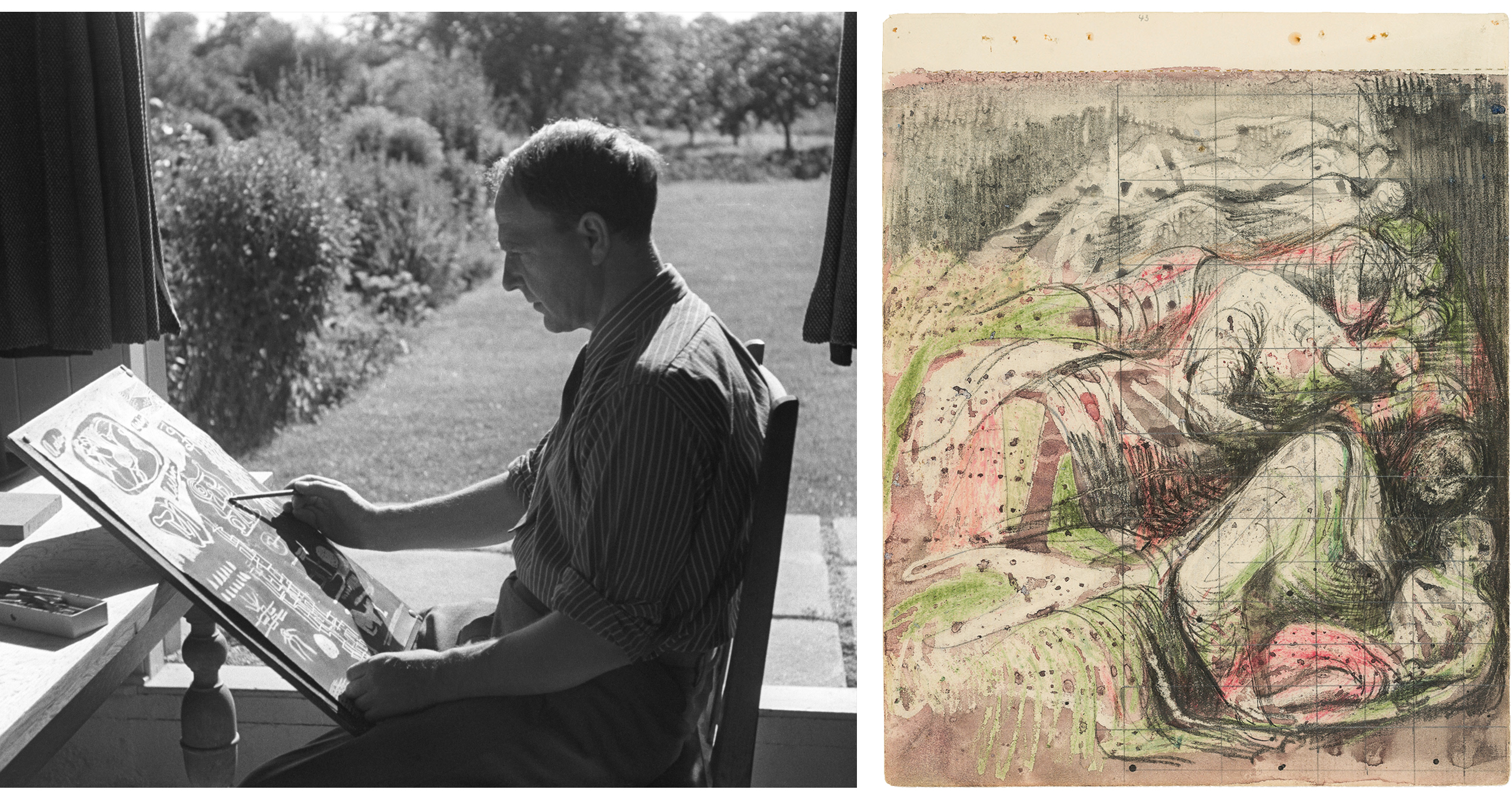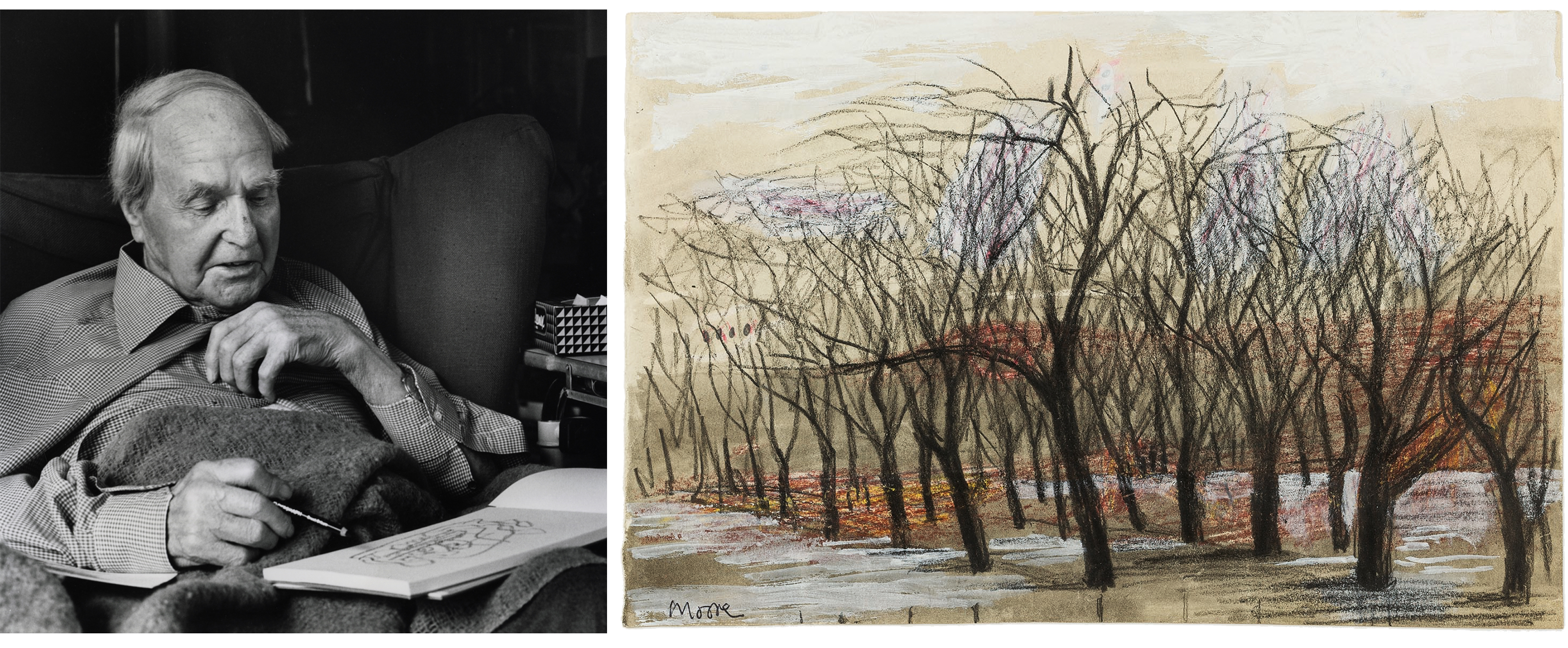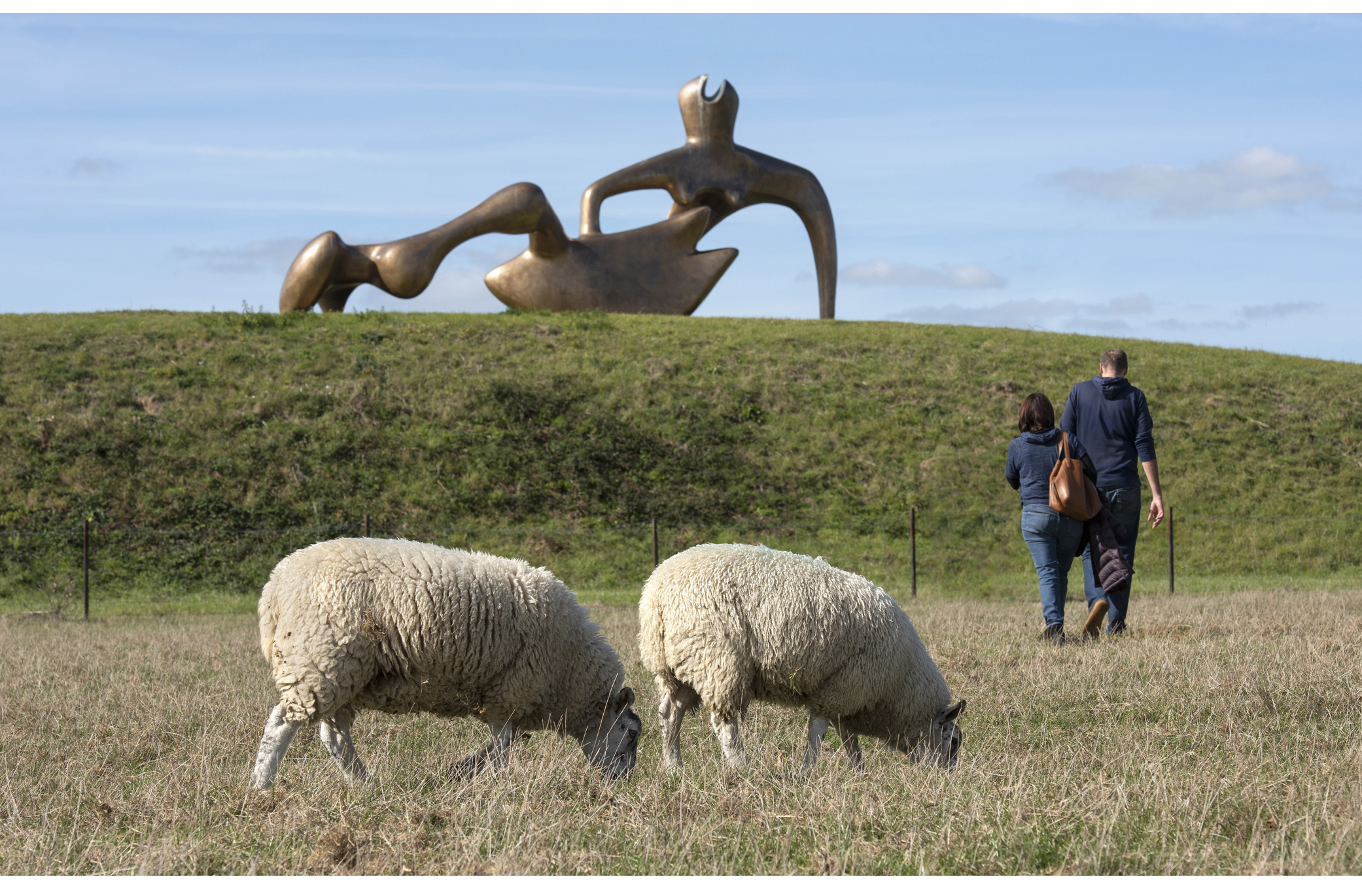The Big Draw Festival 2019: Drawn To Life is well underway around the globe and as Festival organisers fling open their doors to visitors who love to draw and to those who think they can’t, we chat to the Big Draw Co-Creators who are joining us in eradicating the ‘I can’t draw’ myth and eliminating barriers to creative learning through their Big Draw Festival events.
Despite being so well renowned for his sculptural work, Henry Moore was a firm believer in the importance of drawing as a daily exercise. He valued the humble pencil as a tool for learning, developing ideas and understanding other artists' work. Drawing also became a therapeutic tool for Moore in his later years when he was wheelchair bound and unable to make sculpture anymore.
We're thrilled to be stealing a few moments with Sebastiano Barassi, Head of Collections & Exhibitions at the Henry Moore Foundation and curator of The Art of Seeing exhibition, to find out more about the importance of drawing, the great outdoors, and the Henry Moore Foundation's plans for this year's #DrawnToLife events!

Hi Sebastiano! Thanks so much for talking to us today. Why don’t we start by talking about Henry Moore himself; one of the most important British artists of the 20th century, he is thought to be the most internationally celebrated sculptor of his time. Could you tell us a little bit more about the artist and his legacy?
Henry Moore is one of the most famous artists of his time. His work is on display in several countries around the world and it is widely recognised even by those who are not art experts. I think the main reason is that Moore believed that art has an important role to play in society and can contribute to improving everyday life for all. It was because of this that he received so many commissions for civic space all over the world.
Although Moore is best known as a sculptor he also made several important series of drawings that contributed to his fame, for example the Shelter Drawings he made in the early 1940s that gave him his first widespread recognition.

For those of our readers who may not be familiar with the Henry Moore Foundation, could you perhaps offer a brief overview of the work that you do as an organisation?
The Henry Moore Foundation is a charity, set up by Henry Moore himself in 1977. Our main objectives are to preserve Moore’s artistic legacy and to support the appreciation, study and advancement of the visual arts, in particular sculpture.
We do this in several ways. Of course, Henry Moore is at the centre of our activities at the Studios & Gardens, our headquarters in Hertfordshire where he lived from 1940 to 1986. Here we have the collection that he left to the Foundation, which we use to organise exhibitions of his work worldwide. And we also have the Archive to promote and support research into Henry Moore. And generally here people can come and learn about his work as an artist and his personal life. They can visit the studios and his former home, Hoglands, and we also have a programme of special exhibitions.
Another strand of our activity is based in Leeds at the Henry Moore Institute, which was created to support the study of sculpture in the widest possible sense. The Institute hosts world-class research programmes and exhibitions with a focus on the history of sculpture up to the present day.
Finally our Grants programme was created to support the study and exhibition of sculpture, as well as acquisitions of sculpture for public collections, conservation of sculptural work.
Whilst Henry Moore is most renowned for his semi-abstract, monumental sculptures, he worked with a variety of mediums including drawing, printmaking and textile design. Here at The Big Draw we promote the importance of visual literacy across a wealth of different fields; do you think it is important in the creative process to experiment and have fun with a variety of techniques?
For Henry Moore experimentation was central to his way of thinking and the idea of trying out new ideas, techniques, new materials all the time was very important to him, because it allowed him to stray from the more established aspects of his approach. In particular, by working in drawing he was able to do things and explore ideas and themes that were not really suitable for his sculptural work for instance. And I think he understood the importance of drawing as a medium that allows anyone really to be free and try out new things.
There is such a close relationship between viewing and drawing – we firmly believe in ‘drawing to learn, not learning to draw’. I imagine that visitors are often inspired to take pencil to paper by the exhibitions and events held at the Henry Moore Institute in Leeds, and Henry Moore Studios & Gardens in Hertfordshire! Do you believe that drawing is an essential tool for better understanding art, and the world around us?
I do believe it is an essential tool and I think we should follow in the footsteps of Moore, who was a firm believer in the importance of drawing as a daily exercise. He would always set some time aside to draw: in the morning or more often in the evenings, after spending the day working on sculpture in the studios. He used drawing as a means to look at sculpture and to develop ideas for new work. But also to understand other artists - by making copies of or reinterpreting their work. Drawing was a very useful tool for him to study the landscape and the natural forms which were central to his practice in all mediums. So, certainly that idea “drawing to learn” is very much at the forefront of Moore’s approach.
I think this is a message that can be opened up to everyone really. I think that drawing, unlike other art forms such as painting or sculpture has an immediacy that allows everyone to pick it up very quickly. And so you can ask a young child to make a drawing and they will use it not just to repeat what’s in front of them but also to interpret it. But they will also quite often work from memory or from imagination, in the way that most artists do. I think that the universality and the immediacy of drawing give it the potential to be used by everyone as a learning tool.

Here at The Big Draw we believe that art has an incredible effect on both our mental and physical health. Recent research has found that in some cases, taking part in creative activities caused more than a 70% decrease in both anxiety and depression. This year’s Festival theme ‘Drawn to Life’ aims to shine a light on the pivotal role of creativity in our health and wellbeing. How do you think you might incorporate ‘Drawn to Life’ into your Big Draw events this year? Furthermore, does this theme play an important role in your life and work outside of the Festival?
Our events during The Art of Seeing exhibition have offered different insights into Henry Moore’s work. Not least emphasising the importance that drawing had for Moore personally as well as artistically. It’s well known that, especially during his final years, drawing came to have an almost therapeutic effect for him. Towards the end of his life, he was wheelchair bound, suffering from crippling illnesses and unable to make sculpture anymore. And at that point drawing became his only creative outlet. For someone whose mind was so fertile and quite restless and who couldn’t stop thinking about new ideas, drawing was almost a salvation and I think this is obvious in the sheer number of works Moore made in his last years. Over 1,000 drawings are recorded from the last two years of his life, when he was unable to work in any other medium. This period is an important part of the exhibition and I hope people will respond to that and perhaps recognise themselves in those experiences by recognising the therapeutic value of creativity.
I understand that Moore preferred his sculptures to be displayed in amongst natural landscapes, as opposed to the built environment. As part of #DrawnToLife, we have been encouraging people to embrace outdoor activities for the benefits that nature can offer to both our wellbeing and our creativity! Do you think that there’s a natural synergy between art and the great outdoors?
The idea of a close relationship between art and nature is at the very heart of Moore’s work. The very existence of our headquarters in Perry Green is due to the fact that it offered Moore, who had moved here from London at the start of the Second World War, a place where he could do things that would have been impossible in the city because of space constraints and the cost of property and land. In particular working outdoors and showing sculptures out of doors. The outdoors was so central to the way Moore worked….not just in terms of the relationship with nature and the landscape, but also in terms of inspiration. Moore would often draw trees or animals in the landscape, find and collect stones, bones, seashells - the sort of materials that would then provide him with the inspiration to make sculpture and drawings. He would even ask friends to photograph things for him which he would then draw.

Could you tell us a little bit about what’s in store for this year’s Big Draw events at the Henry Moore Foundation?
So October, the Big Draw Festival month, is also the last chance for people to visit our 2019 exhibition The Art of Seeing at Henry Moore Studios & Gardens, which features over 100 drawings from throughout Moore’s career. We will also be showing the winning entries from our Drawing Competition in an exhibition in our visitor centre. We were impressed by the nearly 500 entries we received for the competition and hope that visitors in October will be inspired to pick up a pencil themselves.
During October Half Term in Hertfordshire we will be opening specially for three days of family activities centered around drawing. Our workshop team will be helping families to create Halloween and firework themed pictures using some of Henry Moore’s favourite drawing media, including wax resist drawing, light drawing and inks.

Thank you Sebastiano and the team at the Henry Moore Foundation!
The Henry Moore Foundation is one of our Big Draw Festival 2019 Sponsor Partners.
Have you been inspired by Sebastiano's interview and The Big Draw Festival 2019 theme: #DrawntoLife? Why not join our global Festival in 2019? Registration is now open! Find out more about the benefits of becoming an organiser here and other ways to support The Big Draw's mission here.
